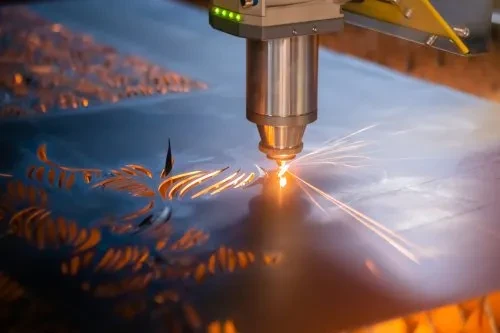மின்னஞ்சல் வடிவமைப்பு பிழை
emailCannotEmpty
emailDoesExist
pwdLetterLimtTip
inconsistentPwd
pwdLetterLimtTip
inconsistentPwd

செய்திகள்
The Development Trend of Modern CNC Milling
Although the method of removing material is different, firstly, both CNC drilling and milling machines and CNC lathes each remove material to produce a part. A machining center usually combines two methods and multiple tools on one machine. All feature multi-axis motion that guides the cutting tool around and through the workpiece to create the exact shape required.
The basic difference between the two methods is that a milling machine uses a rotating tool to cut on the workpiece, while a lathe rotates the workpiece and the meshing is done by the tool.

How does CNC milling work?
Before the introduction of computer numerical control (CNC), milling machines and lathes were operated manually. As the name suggests, CNC automates this process, making it more accurate, reliable, and fast.
Now, trained operator programs the G-code (which stands for Geometry Code) into the machine, usually through software. These control the milling machine, each governs the stroke and speed so that it can drill, cut, and shape the material to meet specified dimensions.
There are many different types of CNC milling machines. The most common are 3-axis machines, which move in the X, Y, and Z axes to provide tools for 3D manufacturing. Three-axis machines are capable of producing more complex features by rotating and repositioning the workpiece to allow access from multiple angles.
On a five-axis machine, this capability is optimized by adding motion in two directions, rotation around the X and Y axes. It is ideal for producing complex and precision parts. The downside, however, is that using this technique will break your budget, as complexity adds cost. Believe it or not, with 5 axes of motion, you can define any 3D geometry. However, it is not practical to hold the workpiece and rotate it freely in all directions. This will be a machine with 6, 7, or even 12 axes. However, unless you need extremely complex parts, it's highly unlikely that you'll need such a machine - because of the huge investment, so is the size of the machine!
What's next for CNC machining?
As you can see, the development of increasingly complex CNC milling machines, which are larger and more expensive to purchase, require more and more expertise to operate, which takes a lot of time. Even if you outsource CNC machining, the cost of this complexity will be higher, as specialized fabricators have to recoup their investment. If you have an extremely complex part that requires incredible precision and requires heavy usage, you may be able to justify the investment. For the vast majority of jobs, 3-axis or at most 5-axis machining is more than enough.
After all, there is always more than one way to solve a problem - for example, it is often the case to design two or less complex parts and then bolt, weld, or connect them as part of the secondary assembly process, rather than trying to It is much better and cheaper to machine an extremely complex single part.
So why is there so much focus on developing new expensive and huge machines that generate less and less profit? It's a bit like Microsoft Office. Most of us use Word, but in reality, we probably only use 20% of what it has to offer. However, Microsoft is constantly adding new features, most of which we may never need, use, or even know about.
Rather than making smaller and smaller incremental improvements to the process, we think it's better to improve the process itself. This is where we can make real gains.
Conclusion
For more information about laser pcb milling machine,milling cutter for cnc,cnc wood milling machine for sale, we are glad to answer for you.

